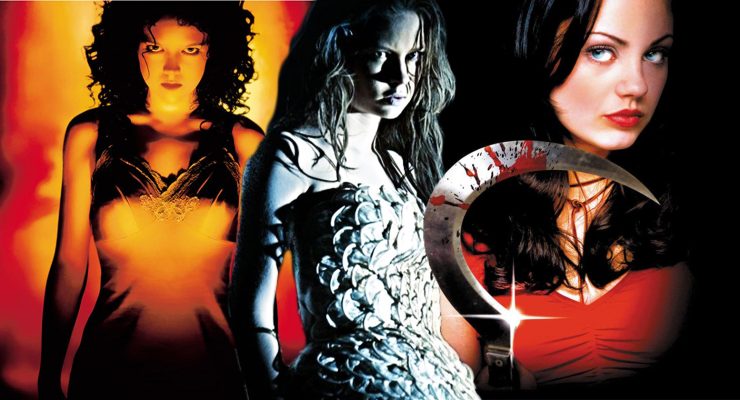Trevor Hogg chats with Academy Award-winning visual effects supervisor John Bruno about his collaborations with James Cameron…
“I was the first guy to breakup a film into multiple vendors and that was on The Abyss [1989],” states American Visual Effects Supervisor John Bruno who has collaborated with filmmaker James Cameron for over 24 years. The underwater tale starring Ed Harris (The Truman Show) and Mary Elizabeth Mastrantonio (Class Action) features an Academy Award-lauded technical achievement in the depiction of an alien life form. “It was written in the script as the water pseudopod; there are only 16 shots of that in the movie. Everybody at the time had their chrome guy and their chrome liquid mercury thing but nobody had done water. By taking surface water, motion, reflection and light and wrapping it around a wired frame grid or tube you got a water tube. We had to say, ‘I don’t know what else to do but we’re going to have to tell ILM we’re going to support them in whatever they need to create this.’ John Knoll [Mission: Impossible – Ghost Protocol] was there as Dennis Muren’s [Innerspace] assistant during that time and he did a lot of the work.”
“Jim said, ‘Here’s the next one, Terminator 2 [1991]. I’ve a liquid mimetic man. How would we do that?’ I said, ‘I recall on The Abyss the first thing that came out of the computer was a chrome liquid surface.’ They split the image and optically composited so to make it translucent. We had one complete digital composite in The Abyss. On Terminator it was the same thing. It was how are we going to do this? I said, ‘He’s going to be a chrome guy. Why don’t we make him gold? It would be different.’ Jim goes, ‘He’s going to look like a walking Oscar!’ We knew we could do it but the big thing was can we do 41 shots of that? ILM needed an upgrade and more money to setup to do it, and that led to Jurassic Park [1993]. You’re mapping a surface over something and lighting the surface. Jim said, ‘Why should I give those guys money? Why don’t we start our own company? That’s why we started Digital Domain.”
“When you see the jet flying it’s on a crane in camera,” reveals John Bruno who received an Oscar nomination for True Lies (1994). “It’s in a motion base on top of a roof where the city is in the background; we had to paint out the motion base. The actors were never more 15 feet off the surface except when they swung out 355 feet over the street to have the fight over the jet. That was pretty hairy. A crane landed the jet and lifted it up when it took off in the Florida Keys. The bridge was an all miniature explosion and the skyscraper was real.” Bruno added jet exhaust and some interactive elements on the ground. “The Harrier itself looks fake doing what it’s doing. Its like, ‘We can do that.’ All we have to do is suspend it on a crane and it looks exactly the same.”
“I was a co-director for Terminator 2 3D [1996],” says John Bruno of the 12 minute short film which served as a mini-sequel. “The cameras were as big as a washing machine. It was shot on 65mm, filmed at 30 frames per second and projected back at 30 frames per second at the Universal Theatre. It’s pretty spectacular even today.” As for his involvement with the Oscar-winning blockbuster Titanic (1997), Bruno visited the famous shipwreck. “I made four dives. With Jim it’s about research. Knowing how stuff works. You have to be quite an adventurer. If you’re not into adventure it’s not going to work with him.”
“I came in the last year and a half of Avatar [2009],” recalls John Bruno. “I ended up being a supervisor out of Weta. I came back at the end and helped with the reshoots and the additional footage that was shot. I did the training scenes where Neytiri is showing Jake how to shoot bow and arrow, track an animal and kill it. I shot with Jim all of the Jake Amp Suit Quaritch Fight; that was mostly with the amp suit on another small motion base. It was the same technique we used for the jet. But this time we put the amp suit torso with the actor in it and put him on a small motion base that matched the animation the camera was filming. It was all insane. Once we had that done it had to be in 3D.” The motion capture for the 10 feet tall blue skin characters needed to be tweaked; however, the basis of the performances by the actors was retained. “Once the shot was approved it would nine months before you saw it. By the end of September, October, November, and December, the shots were taking three months.” Bruno observes, “Jim has done nothing but visual effects films and knows how to do everything; he just needs people to do it.”
The Abyss water tentacle…
The T-1000…
For more from this interview, check out Image Conscious: A conversation with visual effects supervisor John Bruno.
Many thanks to John Bruno for taking the time out of his schedule for this interview.
Trevor Hogg is a freelance video editor and writer who currently resides in Canada.











